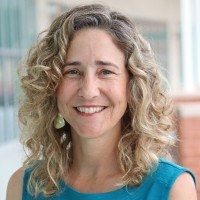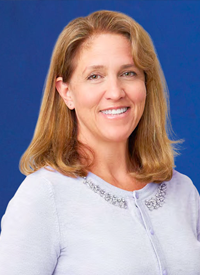Nurses Can Build Strategies to Facilitate More Meaningful Discussions With Patients and Caregivers
Oncology nurses are in less control of their communication environment compared with other health care providers; however, certain strategies can help them communicate effectively with their patients.
Elaine Wittenberg, PhD, FACH

The role of the oncology nurse is undoubtedly unique. One way in which nurses differ from their oncologists is in the conversations they have with their patients and caregivers.
“The nurse has a unique role in communication interactions, [which] is very different from the oncologist and other providers,” Elaine Wittenberg, PhD, FACH, an associate professor at California State University, explained in a presentation during the 47th Annual ONS Congress.
In the lecture, titled, “Tools of the Trade: Communicating Sensitive Topics,” Wittenberg, alongside her colleague, Joy Goldsmith, PhD, a professor of health communication at the University of Memphis, discussed the various ways in which an oncology nurse can engage with their patients on a personal level.
“[Theirs] is an uncontrollable communication environment: there is not a set time that [nurses] go and speak with a patient or family member,” she added. “[They are] the most vulnerable from a communication perspective, [they] get questions in the middle of trying to do a clinical tasks, as [they] witness the suffering of patients and families: [Nurses] don't have control over the communication interaction, it is brought to [them].”
Furthermore, although healthcare professionals usually rely on the voice of medicine compared with the voice of illness—this can lead to lack of understanding for patients. The voice of medicine and the voice of illness differ. Medicine represents the disease, it includes the jargon, and treatment names, while the voice of illness represents the experience, perception, and meaning of symptoms. The personal experience can include questions of financial toxicity or managing to drive kids to soccer practice while also making appointment times.
The COMFORT communication model can help bridge that gap ensure that patients are better able to absorb and maintain information provided to them.
The COMFORT model is based on 7 different principles:
• Connect
• Options
• Making Meaning
• Family Caregivers
• Openings
• Relating
• Team
The basic premise behind COMFORT is a relationship-focused approach to communication rather than an information-driven approach. This means that listening to what the patient is expressing (either verbally or non-verbally) should be the focus of an interaction. It also involves identifying signs of tension as potential openings to discuss concerns that might otherwise be overlooked.
By identifying these moments with tension and finding ways to connect to a patient, rather than just merely reciting information to a patient, oncology nurses can increase a patient’s understanding, confidence, and comfort, the speakers agreed.
Health Literacy
Being health literate means that one can find, select, understand, communicate about, and make discussions related to health, according to Wittenberg However, being able to communicate about health-related decisions does not always represent understanding, and understanding does not always translate easily to decision-making.
“Health literacy is so much more than just finding information or selecting information. It's also includes the ability to talk to people about it, to talk about the things and the information that we find,” she said.
She explained how understanding and action are sometimes 2 different entities: most women know they should receive a mammogram every year–yet not all women actually receive 1 annually, patients may understand that they are supposed to take their medications twice daily–however, but not all patients adhere. Health literacy, therefore, speaks to an understanding that drives informed action.
“Health literacy is not just about education,” Wittenberg said. “I have seen many providers who have become patients who do not have health literacy. And that is because the medicine becomes personal. And when it is personal, it is really hard to process.”
Strategies to Increase Understanding
Certain populations may have an even more difficult time understanding these broad concepts, Goldsmith, emphasized. For example, patients older than 65 years may struggle with health literacy, similar to patients at or below the poverty level, as well as those with a non-native and low level of English literacy.
Joy Goldsmith, PhD

Oncology nurses can address health literacy barriers by using plain language to bridge the gap between what they know and what they need the patient and family to understand. Ideally, language used with these populations should not be more complicated than a sixth-grade reading level.
“We forget that, for many of our patients and families coming to see us, it is the first time i[they are] dealing with illness, it is their first time to deal[ing] with cancer,” she said. “A lot of words can be very confusing, [and] intimidating.
Furthermore, Goldsmith, recommends using an active voice, rather than a passive one, to communicate. For example, “You may need to take a test to find out what’s wrong,” is preferrable over, “Tests may be needed to find out what’s wrong.” In general, the active voice is clearer and easier to understand.
Use of the “second person” is also recommended. An example of using the person family is using the word “you” or incorporating the patient or family’s members first or last name, as opposed to the third person, which is abstract and involves an unnamed person beyond the scope of the conversation. Use of the second person helps make communication patient-centric and focused.
In addition, limiting the information provided at a time is also useful, she noted. Overall, statements should be limited to 15 words or less at a time. If more information is needed, then nurses should take a meaningful pause to allow the patient to absorb what has been said before continuing to another set of information.
Goldsmith emphasized that this can be particularly challenging- it is even challenging for her as a communication professor. However, it can be helpful to imagine that you presenting patients with nothing more than a single sentence or bullet point at a time.
Finally, limiting jargon or new medical words is best practice for helping patients and caregivers reach a place of understanding; everyday language should be prioritized over health care language. An example of “everyday” words related to respiratory issues include breathing, relating to the nose, breathing tubes, and lungs.
“If it isn’t living room talk, it’s jargon,” Goldsmith explained.
Key Takeaways
Overall, communication with patients must be flexible and considerate of a patient’s background and needs, the presenters concluded.
Oncology nurses can make a big difference for their patients by being present, looking for openings and cues to ask gentle question, and ensuring that their language is patient focused and relationship driven.
Reference
Bolte S, Goldsmith JV, Wittenberg E. Tools of the trade: communicating sensitive topics. Presented at: 47th Annual Oncology Nursing Society Congress; April 27-May 1, 2022; Anaheim, CA.


